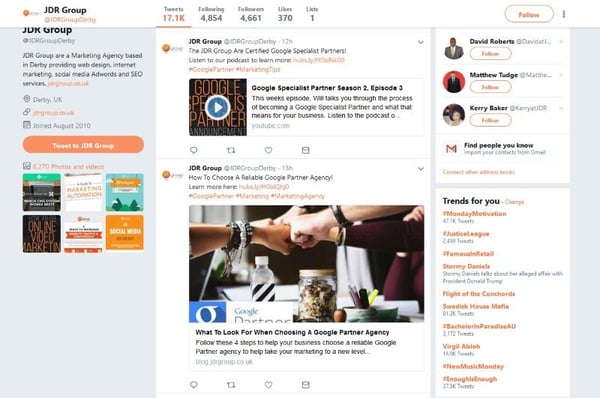How To Ensure Your Content Is Ready For Social Media

Content marketing and social media go hand in hand. Social media is really the best way to promote and distribute your content. With billions of daily users, you're sure to find a platform that your buyer personas regularly visit.
While many social media platforms allow for many formats of content, there is some that focus on specific types of content such as YouTube and Instagram. If you find that your buyer persona enjoys these sites, it may influence the kind of content you produce. Alternatively, if you find that your buyer personas enjoy more broad platforms like Facebook and Twitter you can be as varied as you like with your content.
Social media is ideal for sharing content because it gives the consumer the ability to become a promoter by sharing and liking. They can spread the content they enjoy with like-minded people which could be within your terms of a good buyer persona.
Videos On Social Media
As probably the most widely catered for form of visual content, video can be used on nearly every social media platform.
- YouTube
- Flickr
- Tumblr
- Twitch
- And More
This is because it's a well-loved form of content that is highly engaging, highly entertaining and thanks to subtitles and audio-description, highly accessible. Along with this, video also has a variety to its styles that other content types do not. While an infographic is always an infographic, a video could be a product showcase, live stream, vlog, testimonial, demonstration, brand video, tutorial, interview, comparison, unboxing, advert, montage, charity showcase, grounds tour, explainer video, announcement, event or much more! Choosing the correct type of video will depend on your business and your buyer persona. Make sure you consider which will help you to achieve your goals before putting resourced towards it.
There are a few useful ways to optimise your videos for social media. With YouTube, you obviously want your video to be high-quality and 16:9 as it's a platform designed to show off video in it best possible iteration. For platforms such as Facebook and Twitter, you'll notice videos don't appear at full 16:9 but instead will play at 1:1. That's why it can be useful to resize your videos at this resolution. Facebook and Twitter also have limits to the pixel resolution when uploading so this should be considered in the creation of the video.
Infographics On Social Media
Infographics can be found more commonly on platforms such as Pinterest and Flickr as they are heavily focused on the visuals on the content while they would look too imposing and out of place on a site such as Facebook. An infographic can be a great way to provide useful advice in a fun and engaging manner.
You can optimise your infographic for social media by using their length to your advantage. Increase the contents lifespan by breaking up your infographic into smaller sections in order to release the infographic piece by piece. If you want to share the full piece of content on social media it might be best to upload it onto an external site and link to it, rather than uploading it directly as this would allow you to maintain the quality and reduce the risk of unsightly posts.
Images On Social Media
According to an article by the Huffington Post, social media posts are 53% more likely to get interaction if they contain a visual aid such as an image. This is because when you're scrolling through hundreds of posts on social media, an image is much more eye-catching than a block of text.

Images can be used to complement your post or they can be the focus. When used as a visual aid, they can grab people’s attention and then they're more likely to read your content. If the image is the focus of the post you'll receive more interactions but Google won't get as much when crawling your social media for SEO. It's a fine balance between getting interactions and improving SEO.
In order to optimise images for social media, you need to be aware of the file size limit of the platform as many will stop you from using huge images. Reducing the size of images will also speed up the uploading process as large images can take a long time to upload. Your images need to grab attention so using bright colours is going to be more effective than a white/bland image.
Blogs On Social Media
Articles are slightly different than the other types of content we've talked about as they can't be uploaded directly to a social media platform. They must instead be linked in your posts and optimised to raise their click-through-rate.
You can optimise your articles by:
- Keeping your titles short as people don't like reading long titles
- Making the value of the article clear
- Using a bit.ly link in your post instead of a full URL
- Using an engaging featured image
- Adding a good Meta description.
A well-optimised article can encourage a lot of traffic to your website from social media and can also result in many conversions thanks to its CTA.
Conclusion
Social media is a great tool for businesses and can be paired with content to great effect. Now that you know how to create the best content to upload to social media, you need to create a social media content plan. The JDR Group are marketing experts and can help guide you through this process. You can contact us via our website or call us on 01332 343 281.


